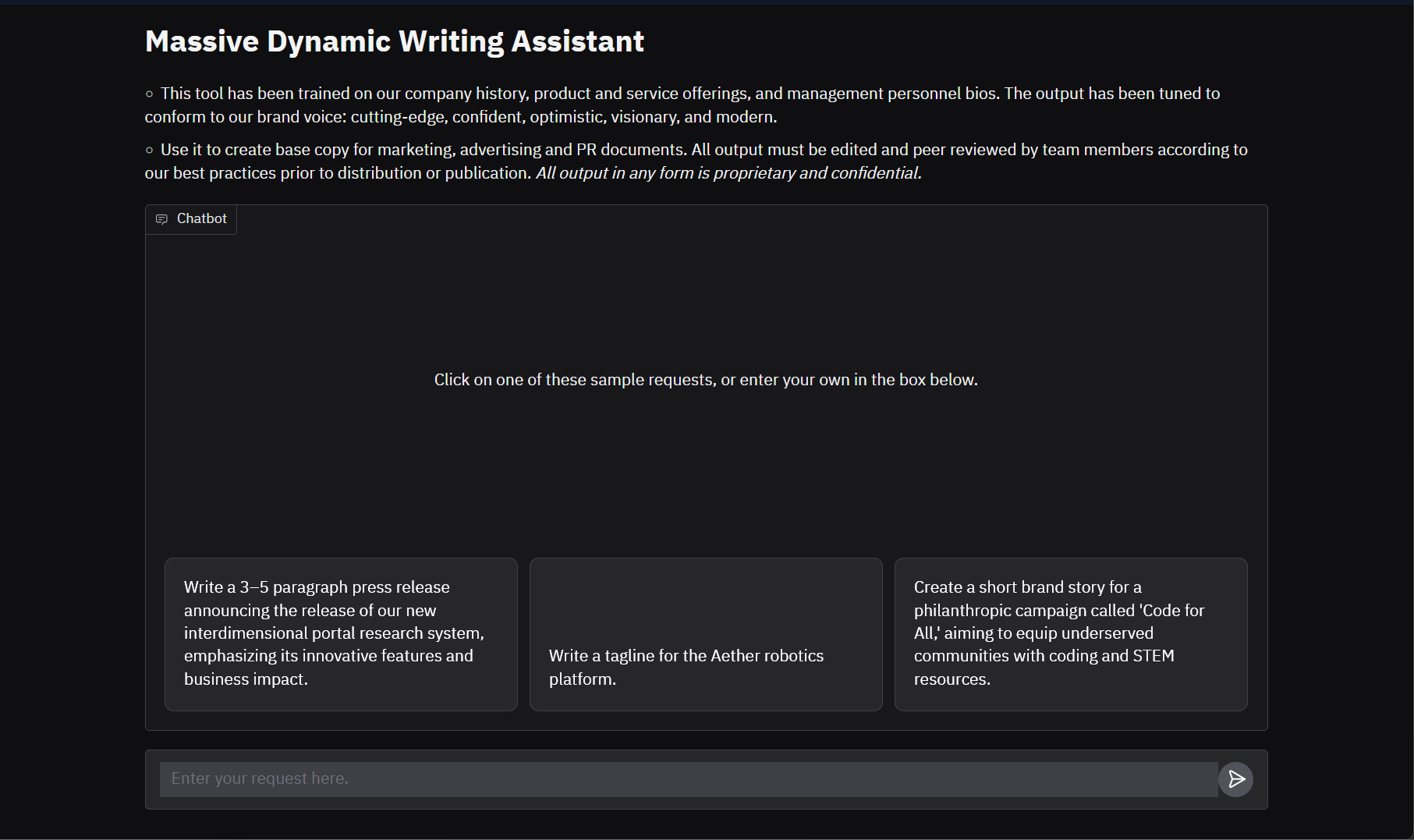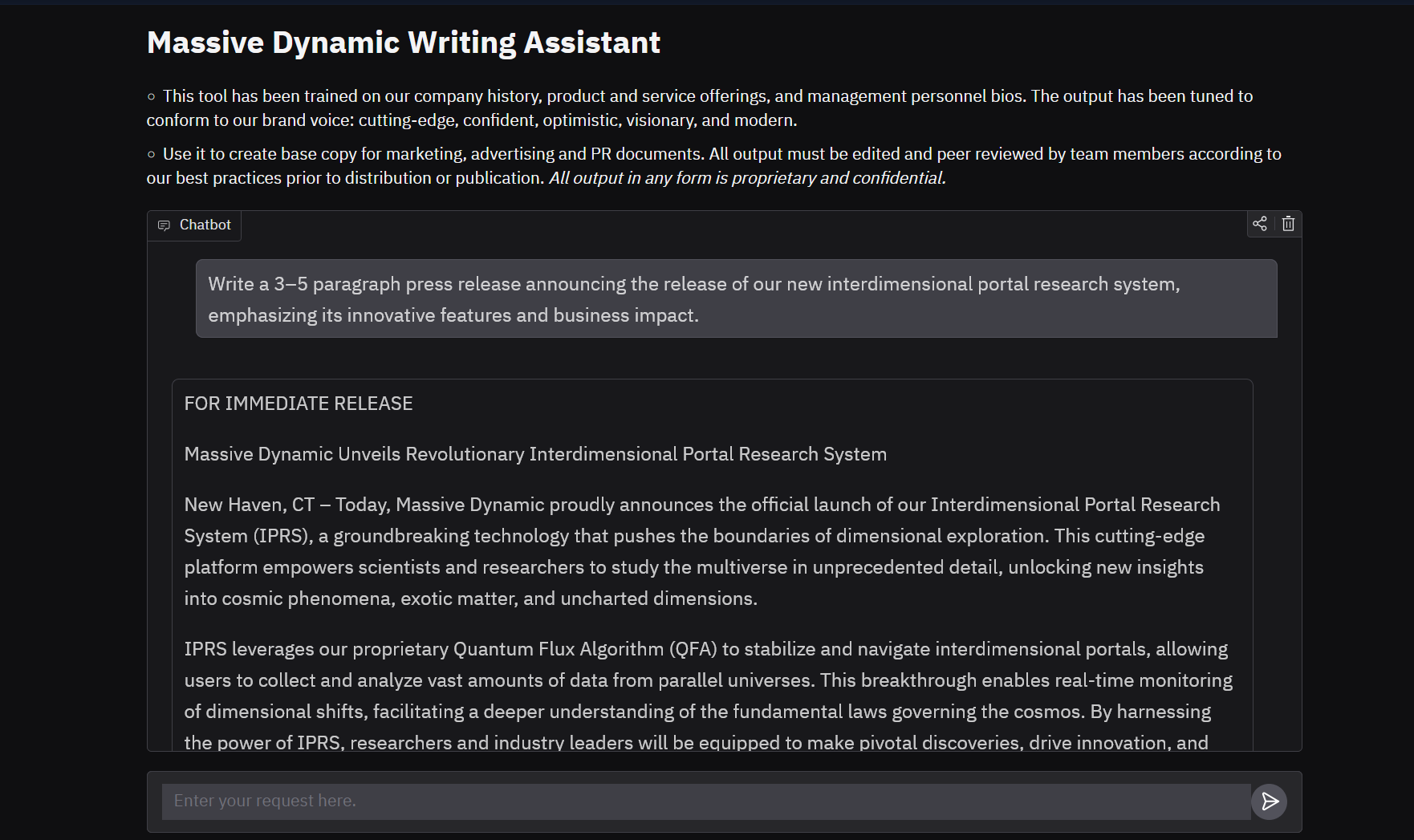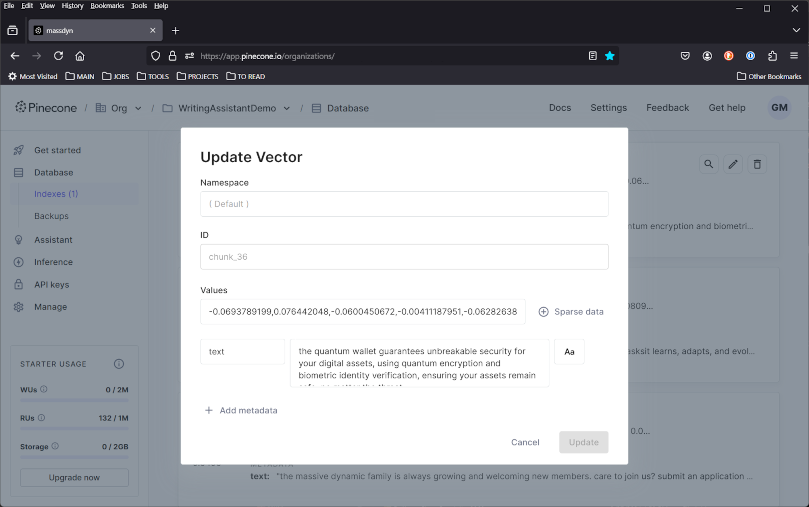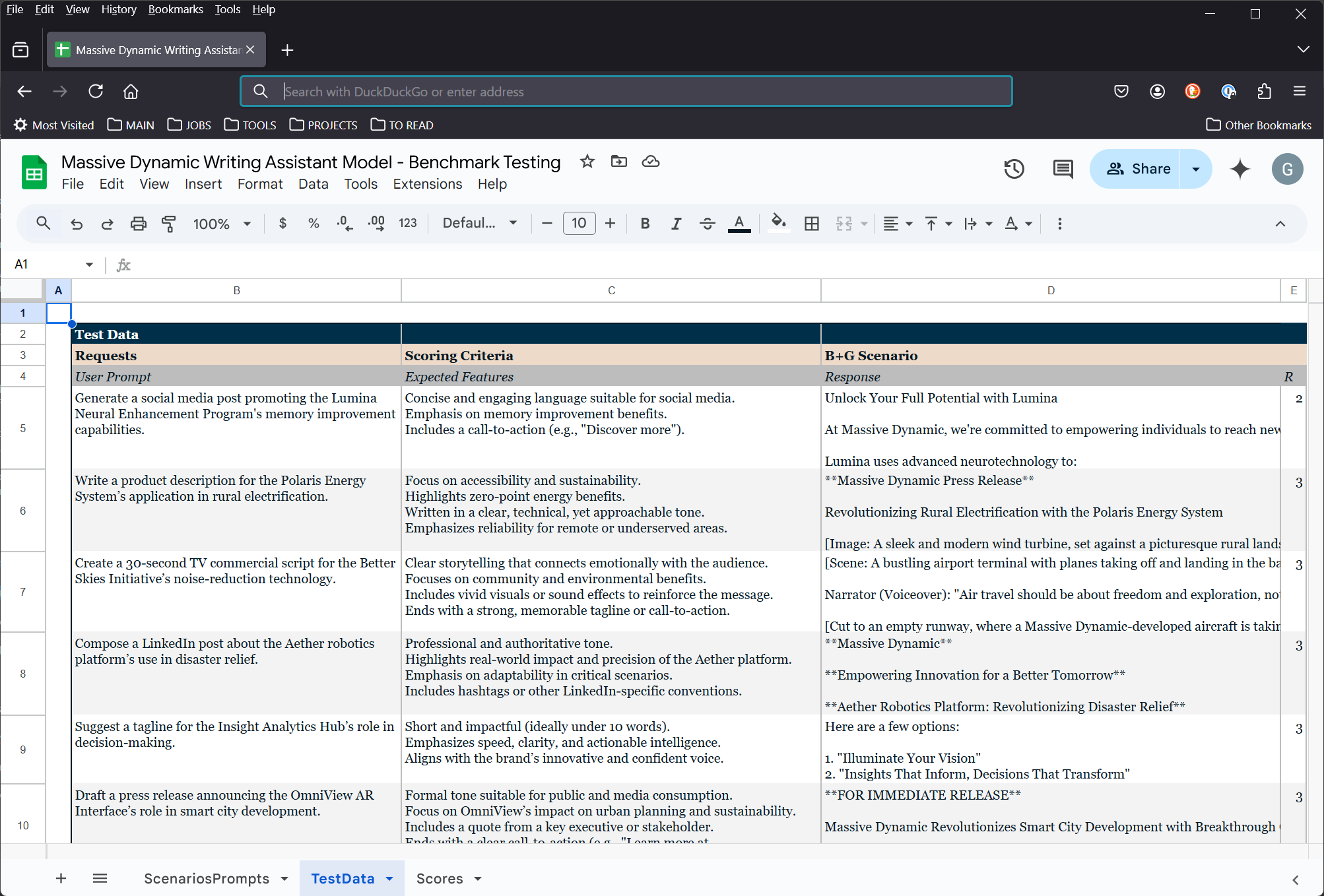



Generative AI Writing Assistant
Summary
"Our backlog is a nightmare. We need help drafting content faster, but it still has to sound like us."
I built an AI writing assistant that generates on-brand drafts using a fine-tuned language model and structured context from internal documents. The tool improves tone, fluency, and relevance, helping marketing teams draft documents faster without sacrificing voice or strategy.
- Role — Model trainer, pipeline developer, inference architect, UX designer, evaluator
- Tools — Python, Gradio, Hugging Face, Pinecone, Google Colab (Tesla T4 GPU), Unsloth, LLaMA 3.1 8B, LM Studio
This tool demonstrates the feasibility of a brand-aligned writing assistant using open-source technology, with measurable improvements in relevance, fluency, and voice across test scenarios.
I created this project to explore how generative AI could augment human creativity rather than replace it by designing and fine-tuning a writing assistant that honored brand tone, adapted to inputs, and improved draft quality through structured context.
Gallery

A custom Gradio interface guides users through brand-aligned content creation, including press releases, taglines, and campaign copy, all grounded in fine-tuned tone and fictional company context.

Shown here: a 5-paragraph press release generated using the fine-tuned model and RAG-augmented context, reflecting the brand's confident, visionary voice while preserving structure and clarity.
Click an image for a closer look and more information.
Details
I broke the project into five key phases, with tooling and decisions tuned for experimentation, iteration, and future portability.
- Defined a five-part brand personality for Massive Dynamic (cutting-edge, confident, optimistic, sleek, mysterious)
- Prompted ChatGPT to generate 300 Alpaca-format entries simulating company documents: memos, ads, social posts, product copy, guides, scripts, etc.
- Validated fictional consistency using known facts from Fringe, while expanding the mythology
- Selected Meta's LLaMA 3.1 8B Instruct model
- Used Unsloth's Colab notebook with modifications to run training on a Tesla T4
- Tuned model in multiple runs, adjusting step count and watching for overfitting
- Exported model in GGUF format with q4_k_m quantization for lightweight inference and local testing
- Supplemented model training with a paragraph-chunked knowledge base (e.g., company fact sheets, historical notes, character bios)
- Cleaned and embedded the content using sentence-transformer embeddings, then stored it in Pinecone
- Chose paragraph chunks over sentence chunks after testing revealed stronger contextual preservation
- Wrote two Python apps using Gradio: one with model-only inference, one with RAG
- Deployed the model to Hugging Face Inference Endpoints using an OpenAI-compatible container
- Built the frontend in Hugging Face Spaces using the more flexible
Blocks APIoverChatInterface - Designed a detailed system prompt to reinforce voice, context rules, disclaimers, and format expectations
To test performance and brand fidelity, I designed a four-scenario evaluation using structured scoring:
- B+G: Base model with general system prompt
- B+BV: Base model with brand voice prompt
- FT+G: Fine-tuned model with general system prompt
- FT+BV: Fine-tuned model with brand voice prompt
Each scenario responded to 10 common prompt types (ads, product blurbs, memos, social posts, etc.) and was scored across four axes:
- R (Relevance): Did it fulfill the prompt?
- C (Consistency): Did it reflect the brand voice?
- F (Fluency): Was the language natural and strong?
- Cr (Creativity): Was the result interesting and original?
- Fine-tuning matters: The fine-tuned model consistently outperformed the base model on fluency and brand consistency
- Paragraph chunking improved RAG quality: Sentence-level chunks returned incoherent or incomplete context
- Quantized GGUF deployment was both portable and performant, outperforming LoRA-injection during inference
Blocks-based Gradio UI allowed for better layout and component control compared toChatInterfaceabstraction- Structured testing enabled meaningful comparisons between scenarios
- Add blind user evaluation to test outputs from a qualitative human lens
- Explore Reinforcement Learning from Human Feedback (RLHF) for ongoing fine-tuning
- Test with real company data to evaluate impact of pretraining conflicts and RAG correction techniques
- Integrate feedback capture in the UI to support live tuning
- Evaluate larger or less-quantized models in enterprise infrastructure
- Fine-tuning and RAG are complementary: training sculpts tone, while RAG grounds factual context
- The choice of chunking strategy and model format can significantly impact output quality
- Even in fictional domains, realism, clarity, and constraints matter for building believable AI assistants
- Lightweight infrastructure (GGUF + Hugging Face Inference + Gradio) is sufficient for production-quality prototypes

